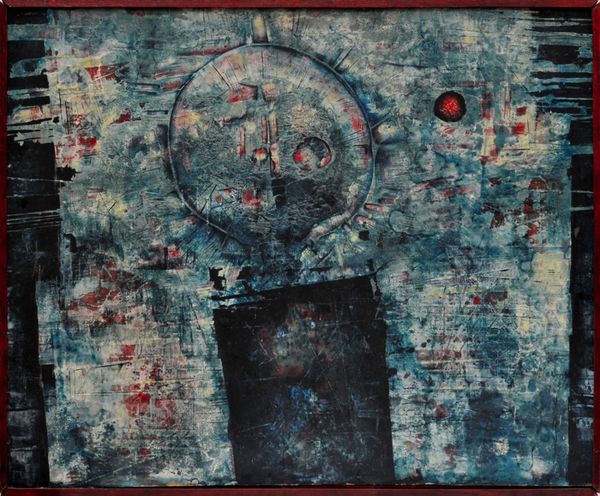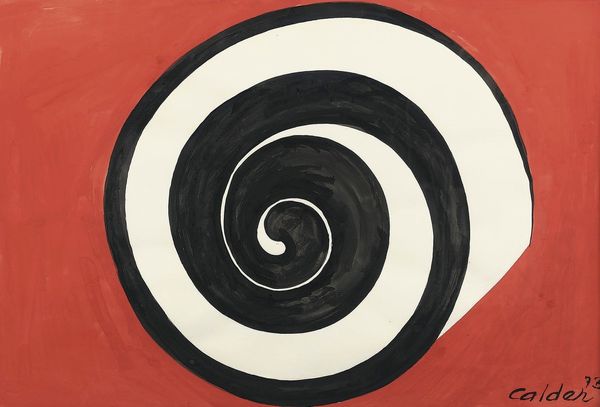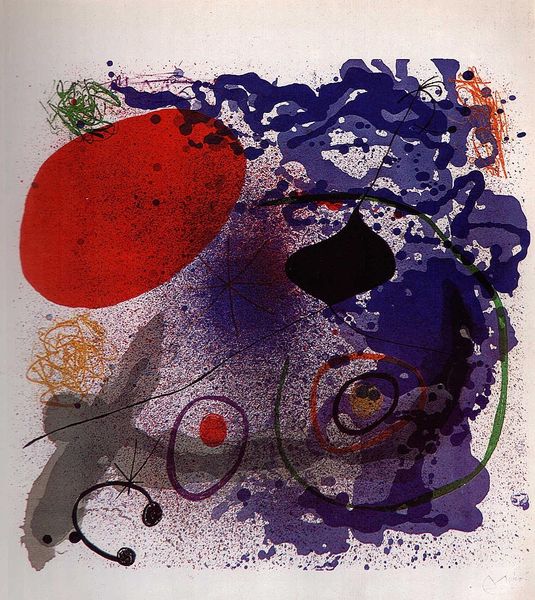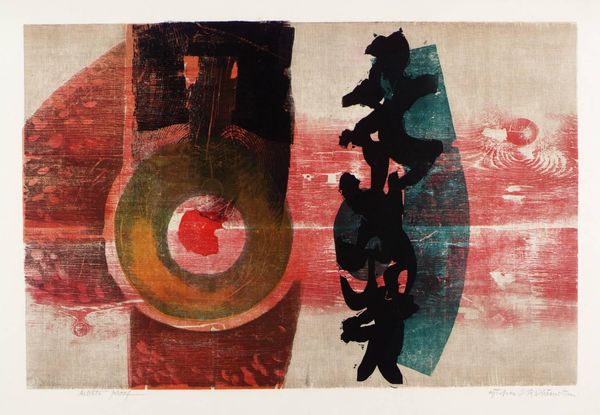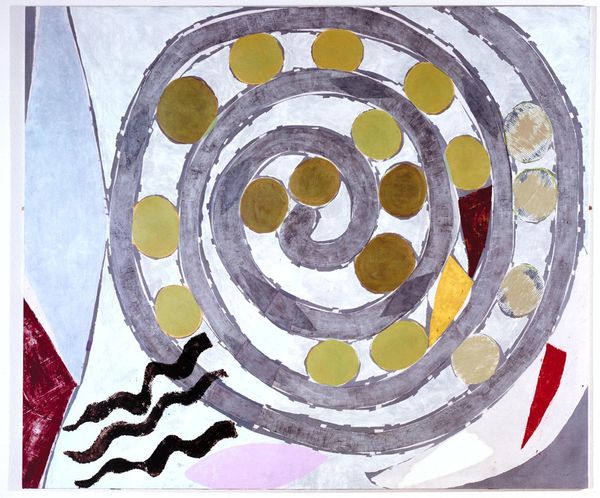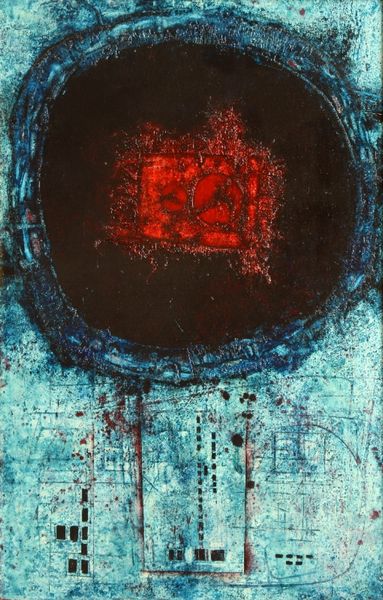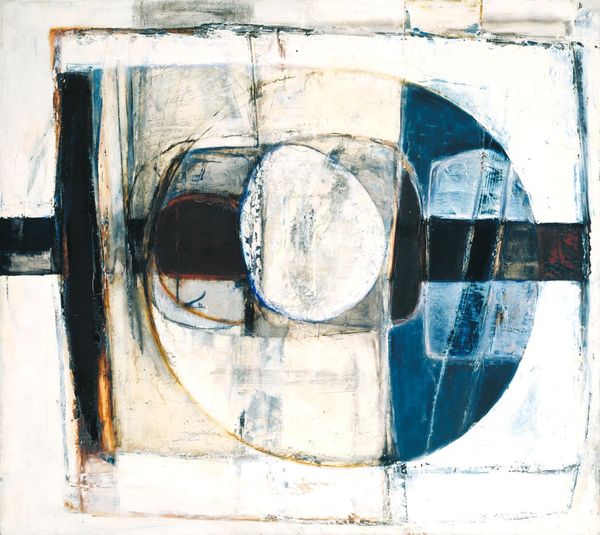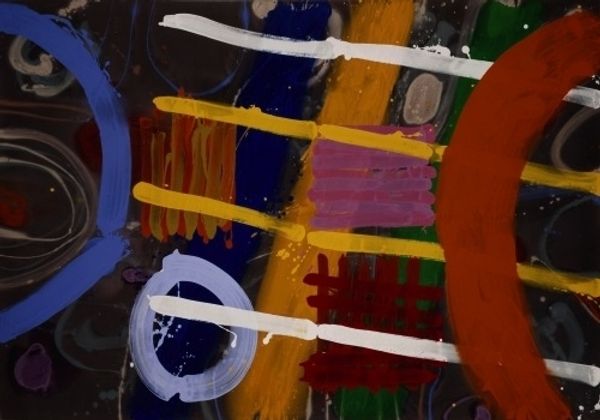
#
neo-pop
Dimensions: 300 x 300 cm
Copyright: Takashi Murakami,Fair Use
Editor: We’re looking at Takashi Murakami’s “And Then, And Then, And Then And Then, And Then (Red),” from 1996, created using acrylic paint. I find the almost overwhelming repetition of shapes and the slightly distressed surface texture strangely compelling. What strikes you most about the work’s formal qualities? Curator: The interplay between the flat, graphic character and the textured surface is quite potent. Note how the bold, primary color – red – dominates the composition, creating a visually aggressive field. But, the layered application and partial effacement introduce an element of temporal decay, a visual history embedded in the object. Does that resonance come across? Editor: Yes, I see that. It feels less about a perfectly smooth, Pop-Art surface and more about… a lived-in reality. I hadn't noticed the temporal quality at first. How does this relate to other patterns or themes in his body of work? Curator: Consider the figure itself: its simplification, the geometric reduction to basic shapes, especially in contrast with the expressive features like the eyes and the wide grin. We are prompted to interpret a certain artificiality or manufactured affect, yet this relies on a balance achieved through texture. Murakami's work engages critically with the intersection of tradition and the contemporary, isn't it so? Editor: Absolutely. So, by focusing on the textures and composition, we can see a conversation about the artificiality and reality in Japanese pop culture? Curator: Precisely. It’s not simply a flat image; it’s a constructed visual space imbued with complexity. Editor: I’m beginning to see beyond the initial pop aesthetic. Thank you. Curator: Indeed. Focusing on these intrinsic elements provides an avenue toward interpreting this image and many others.
Comments
No comments
Be the first to comment and join the conversation on the ultimate creative platform.


